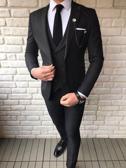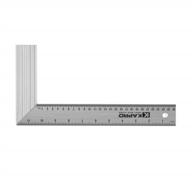
Review on 🔌 MakerHawk USB Load Tester: 150W 200V 20A Resistor, Adjustable Constant Current Battery Capacity Module. Intelligent Discharge Resistance Power Tester by Darryl Montagna

UPDATE Used to be like that. No longer. Became thin and not accurate.
UPDATE 02/06/21 I have had this unit for about 9 months. At that time I used it to test small lead-acid batteries in the 3-9Ah range. I thought things were going well. Today it started to fail and work unstably, and the power consumption fluctuated wildly. I've found that if you drop the current below 0.05A, the timer and measurements don't update, and you can't set it in increments greater than 0.02A. I stabilized it and set it to 0.05A. I let it run for 10 hours. This should correspond to a consumption of 0.5 Ah. He read about 0.3 AH. So VERY inaccurate. I'm thinking of something else, like a West Mountain Radio battery analyzer or an electronic load bank, both of which cost $200 or more. Rating to 1 star. It is an adjustable electronic load capable of dissipating up to 150W at an adjustable current level. If you bought this, learn how to customize your alarm settings. I use the following. Minimum voltage: 11.1 V (for discharging small 12 V AGM lead-acid batteries) Maximum voltage: 54 V Maximum current: 10 A - 15 A Maximum power: 150 V. That's why I chose these values. I want to discharge my AGM battery to 20% SOC. When NOT under load the DC voltage should be around 11.6V. Don't just take my number and use it. Do your own research to find out what to use. Each battery type has a different number. But the voltage drops under load. So I want the load to turn off when I reach 11.1V. It may not be the best way to do things and it may not work for all 12V AGM batteries. But that's what I do. If you use the boot device I mentioned with these settings, it will complain about no battery or a battery with a voltage below 11.1V. If you connect a battery with a high charge, the alarm will turn off. My logic for the maximum voltage was basically that I wanted to know if I was connecting the battery to a load with a high enough voltage that I had to worry about electrocution. This number is arbitrary and I am NOT suggesting that lower voltages won't shock you. I listed the maximum current simply because I don't think the included wires and clamps can handle high current. The device I received was set to a maximum output of 185 watts. However, the manual says the device can't handle more than 150W with the included fan. So I reduced this alarm value. Make sure the fan and heatsink have adequate airflow. Remember that the heatsink gets very hot when 150 watts are passed through it. I love this device and it does what I want and allows me to drain small batteries. I prefer to power it with a micro USB cable. Always start by turning the control knobs counter-clockwise or to the off position. That way, what you're testing doesn't get stressed when you plug it in. Then gradually increase the fine tune to see if it's high enough for what you want. If not, slowly begin adjusting the course adjustment. You can set up alarms by turning on the load when the button is pressed or while the load is running. You need to study the instructions, as the procedures will take some getting used to. Although fully functional, it looks more like a prototype device. No business. The circuit board is open. The heatsink is open. The handles are located next to the radiator. You must be VERY careful when moving and handling this device or you will likely damage it. Also, as I write this, we are entering winter. In most buildings, this means low humidity, which leads to static build-up on the body and clothing. If you touch a light switch or water pipe and feel an electric shock, that's more than enough to destroy the electronics. Therefore, you must discharge static electricity from your body before touching this device or any electronic device. Although I've only been using it for a few hours, I like it. Although I can't say how accurate it is. And I can't say how long it's gonna last. Ron
- Very good quality
- Definitely bad product
New products
Comments (0)
Top products in 🛠️ Scanners & Testers

Room temperature and humidity sensor Aqara Temperature and Humidity Sensor white

25 Review

VIVREAL 4 In 1 Stud Finder Wall Scanner With LCD Display - Center Finding Beam Finder And Sound Warning For Wood, AC Wire, And Metal Studs (Black/Silver)

24 Review

Cable tester BENETECH GM60

15 Review

Thermometer B.Well WF-4000 white

57 Review
Another interesting products

📏 Johnson Level and Tool 400EM-S 12-Inch Heavy Duty Metal Combination Square for Professionals, with Inch/Metric Measurements, Silver - 1 Square

8 Review

Triangle Group TR918 225/45 R18 95V summer

61 Review

Kapro 307-08-TMS Try And Mitre Layout And Marking Square With Stainless Steel Blade, 8-Inch Length

18 Review

TV bracket Kromax DIX-18 black

52 Review

